Being a homeowner means keeping up with roofing maintenance suggestions. Otherwise, you risk structural damage to the integrity of your home. Pinnacle Home Improvements is a leading roofing company specializing in various home improvement services. As such, we take our dedication and commitment to our local community very seriously and are always here to not just sell, but educate.
The blog post will focus on providing valuable roof maintenance tips to help homeowners ensure the longevity and health of their roofs. Once you’re finished reading these roof maintenance guidelines, if you feel you need a roofing company please contact our team.
Essential Strategies for Homeowners
Maintaining a roof is crucial for the longevity and overall health of a home. It acts as the front line of defense against environmental elements, protecting the interior from water damage, pests, and the negative effects of extreme weather. Regular roof maintenance is not just about longevity; it also ensures energy efficiency, as a well-maintained roof provides better insulation, helping to regulate the temperature inside the house. Over time, even the most durable roofing materials can deteriorate, leading to leaks and other costly damage. Hence, periodic inspection and upkeep can help homeowners detect and address minor issues before they escalate into major problems.
Roof repair is an integral part of maintaining a safe and sturdy home. When damage occurs, repairs should be carried out promptly to prevent further deterioration. Identifying potential vulnerabilities, such as cracked shingles or blocked gutters, allows for timely interventions that can extend the life of the roofing structure. Moreover, repairs are often far more economical than a complete roof replacement, making regular maintenance a financially prudent practice.
Professional roofers can provide insight into the specific needs of different roofing materials and designs. For instance, flat roofs may require different maintenance strategies from sloped ones, and the treatment of tile roofing can differ from that of metal or asphalt shingles. By adhering to a maintenance schedule and addressing repairs proactively, homeowners can safeguard their investments, ensuring that their roofs remain robust and functional for years to come.
Understanding the Importance of Regular Roof Maintenance
Regular roof maintenance is vital to prolonging the lifespan of a roofing system. A well-maintained roof protects a home from water infiltration, which can lead to expensive structural damage. By conducting routine inspections, homeowners can identify small issues before they escalate into larger, more costly problems.
Tasks such as cleaning gutters, inspecting flashing, and replacing missing or damaged shingles play a crucial role in roof upkeep. These actions prevent the buildup of debris which can cause water to pool and lead to leaks or rot.
Roofing Maintenance Suggestions:
- Inspect: At least twice a year, perform visual checks for any signs of damage.
- Clean: Remove leaves, twigs, and other debris that could clog gutters and downspouts.
- Trim: Cut back overhanging branches to reduce shade and debris, thus discouraging algae growth.
Detecting Problems Early:
Regular maintenance can catch problems such as:
- Cracked, curled, or missing shingles
- Damaged or improperly sealed flashing
- Signs of water damage or leaks, especially after heavy rain
By addressing these issues promptly, homeowners can avoid the far-reaching consequences of roof neglect, which can include diminished energy efficiency, interior damage, and even a reduction in property value. Thus, regular roof maintenance is not just about preservation; it is an investment in the home’s overall well-being.
Inspecting Your Roof Regularly
Regular inspections are key to maintaining a roof’s integrity and longevity. They enable homeowners to identify potential issues early, ensuring that minor problems do not escalate into major damages.
Detecting Signs of Damage
Inspecting a roof involves a thorough examination for any indications of deterioration. Homeowners should look for:
- Missing, broken, or curled shingles: This can be a direct entry point for water, leading to leaks.
- Damaged flashing around vents, chimneys, and skylights: Compromised flashing can allow water to penetrate beneath the roof’s surface.
- Clogged gutters: Ensure gutters and downspouts are clear of debris to prevent water damage.
- Sagging: A sagging roof is a sign of structural issues that need immediate attention.
A systematic approach to checking for damage includes:
- Visual inspection from the ground using binoculars.
- Checking the attic for water stains, wood rot, or daylight through the roof boards.
- Professional inspections every few years or after severe weather events.
Dealing With Biological Growth
Biological growth such as moss and algae can be more than just an aesthetic issue, as they retain moisture against the roof surface and potentially cause damage. To manage this, one should:
- Moss: Remove gently with a soft brush, then apply moss-killing products specifically designed for roofs.
- Algae: Apply a solution of equal parts water and bleach to kill algae, avoiding high-pressure washing, which can damage shingles.
It’s vital to maintain safe practices while performing any roof work. Homeowners are advised to use sturdy ladders, wear non-slip shoes, and always have someone nearby in case of accidents. For extensive or high-risk issues, they should contact qualified roofing professionals. Regular maintenance, when combined with early detection of growth and damage, can significantly extend the life of a roof.
Essential Cleaning Practices
Maintaining a clean roof is crucial to prolong its lifespan and ensure effective water drainage. Regular removal of debris and unblocking of water pathways can prevent damage and costly repairs.
Roof and Gutter Cleaning
For best results, homeowners should clean their roofs and gutters at least twice a year. They must carefully remove debris such as leaves, branches, and dirt using appropriate tools:
- Roof Surface: Use a long-handled soft-bristle brush to gently remove debris.
- Gutters: Don gloves and manually clear out leaves, or use a gutter scoop.
After debris removal, flushing the gutters with a garden hose can help remove residual dirt. It’s important not to use high-pressure washers on the roof, as they can damage shingles and sealants.
Clearing Out Downspouts
Ensuring downspouts are clear is essential for the water to flow away from the roof effectively. A step-by-step approach involves:
- Inspecting the downspout opening for clogs.
- Dislodging debris using a plumber’s snake.
- Flushing the downspout with a hose to ensure clear water flow.
If water doesn’t drain freely after these steps, further investigation into the downspouts and connected drainage may be required. Regular checking and clearing of downspouts prevent water from backing up and causing damage to the roof and gutter system.
Conducting Minor Repairs
Minor repairs can significantly extend the life of a roof. Addressing small issues promptly prevents larger problems and maintains the roof’s integrity.
Repairing Shingles and Tiles
When repairing damaged shingles or tiles, one needs to assess the extent of the damage. For a single shingle or tile, it’s often as simple as removing the damaged piece and replacing it with a new one. Always lift the overlapping shingles carefully before removing the nails from the damaged shingle. Slide the new shingle into place and nail it securely. Cover the nail heads with roofing cement to ensure a watertight seal.
- Tools Needed:
- Pry bar
- Hammer
- Nails
- Roofing cement
- Steps:
- Lift overlapping shingles.
- Remove nails of damaged shingle.
- Position new shingle.
- Nail in place.
- Apply roofing cement over nail heads.
Preventing Roof Leaks
To minimize the chances of roof leaks, regular inspection and maintenance are crucial. Check for any cracked or missing caulk around flashings, vent pipes, and other roof penetrations. Seal any gaps with roofing cement to prevent water ingress. Additionally, ensure that gutters and downspouts are clear of debris to facilitate proper water drainage away from the roof.
- Areas for Inspection:
- Flashings
- Vent pipes
- Roof penetrations
- Preventive Actions:
- Replace old caulk with new roofing cement.
- Clear gutters and downspouts.
- Ensure adequate attic insulation and ventilation to prevent ice dams.
Maintaining Roof Ventilation
Proper attic ventilation is crucial to extend the life of a roof. It facilitates the flow of outside air through the attic space, reducing heat and moisture buildup that can lead to roof rot, insulation damage, and increased energy costs.
Regular Inspection: Homeowners should inspect vent openings for blockages, such as nests created by birds or insects, at least twice a year. Clear any debris to ensure unobstructed airflow.
Soffit Vents: Ensure soffit vents are not obscured by insulation. These vents allow cool air to enter the attic, which pushes hot air out through the ridge vent. They must remain clear to function effectively.
Ridge Vent Maintenance: Ridge vents run along the peak of the roof and allow the hot air to escape. These should be checked for cracks or damage that could compromise their effectiveness.
Gable Vents: If the roof has gable vents, they should be inspected for blockage or operational issues like stuck flaps that can prevent proper air movement.
Balanced Ventilation: A balanced system, with equal intake and exhaust, optimizes ventilation. Ventilation calculations are based on the size of the attic space. Professionals can provide assessments and recommendations if adjustments are needed.
| Action Item | Purpose | Frequency |
| Inspect vents | Remove blockages | Biannually |
| Check for damage | Ensure functionality | Biannually |
| Evaluate balance | Adjust intake/exhaust ratio | As needed |
Homeowners must address any signs of moisture in the attic immediately, such as wet insulation or mold, as these can indicate inadequate ventilation. Hiring a professional for an inspection or repair can prevent bigger issues and maintain the integrity of the roof system.
Seasonal Maintenance Strategies
Roof maintenance requires attention to seasonal variations to protect its integrity and longevity. Each season presents unique challenges and opportunities for upkeep.
Spring:
- Inspection: A thorough inspection is critical after winter’s harsh conditions. Look for cracks, loose or missing shingles, and damaged flashing.
- Cleaning: Remove debris from gutters and the roof’s surface. This prevents water accumulation and the growth of mold and algae.
- Repair: Address any damage immediately to prevent further deterioration.
Summer:
- Ventilation: Ensure proper attic ventilation to reduce heat buildup, which can prematurely age the roof.
- UV Protection: Apply a UV-resistant coating if appropriate to protect against sun damage.
- Landscaping: Trim overhanging branches to prevent physical damage and reduce the accumulation of leaves and debris.
Fall:
- Gutter Maintenance: Clean gutters and downspouts to ensure proper drainage during the rainy season.
- Sealant Check: Examine and replace sealant around vents and flashing if needed.
- Pre-Winter Repair: Fix any minor issues to prevent water infiltration from snow and ice.
Winter:
- Snow Removal: Carefully remove excess snow from the roof to prevent ice dams and excess weight.
- Insulation: Verify that insulation is adequate to inhibit heat loss, which affects the roof’s temperature.
- Regular Monitoring: Watch for ice accumulation and signs of stress on the roofing structure.
Professional help is advisable when homeowners detect signs of serious damage or when undertaking complex maintenance tasks. Regular intervention tailored to climatic demand ensures a durable and functional roof.
When to Seek Professional Help
Immediate professional assistance is warranted in certain circumstances to maintain roof integrity and safety. Homeowners should be vigilant in identifying situations that are beyond the scope of DIY upkeep.
Emergency Situations:
- Severe roof damage due to extreme weather events such as hurricanes, tornadoes, or hailstorms.
- A tree limb or other heavy object has fallen and caused significant structural damage.
Safety Concerns:
- Steep or high roof pitches where the risk of falling is increased.
- Evidence of electrical issues, such as wiring contact, which may pose a fire risk.
Signs of Serious Roofing Issues:
- Persistent leaks after attempting simple repairs.
- Multiple missing or damaged shingles indicating widespread wear.
- Sagging roof sections, which suggest structural problems.
- Major water damage visible in the attic or upper floors.
When Expertise is Essential:
- Installation of a new roof or a replacement requiring experience with materials and building codes.
- Insulation problems requiring specialized knowledge of ventilation systems.
- Complex repairs that involve the replacement of underlayment or structural supports.
It is essential to consult professionals for roof maintenance and repairs that are beyond routine checks and fix-ups to ensure effectiveness and safety.
General Roof Care and Maintenance Tips
Proper care and regular maintenance are critical to ensuring a roof’s longevity and performance. Homeowners should adopt a systematic approach to maintain their roofs effectively. Here are some vital guidelines:
- Inspection: Conduct semi-annual inspections, ideally in spring and fall, to identify any signs of damage or wear, such as cracked, missing, or warped shingles. Look for debris in the gutters and downspouts.
- Cleaning: Keep the roof free of debris, such as leaves and branches. This prevents water accumulation, which can lead to rot and mold. Clean gutters regularly to ensure proper drainage.
- Trimming: Trim overhanging tree branches to reduce shade and minimize debris accumulation. This also prevents damage from falling limbs during storms.
- Moss and Algae Treatment: Use a moss killer designed for roofs to prevent the growth of moss and algae, which can compromise roofing materials.
Maintaining Sealant and Flashing:
- Sealant: Check and reapply sealant around roof penetrations and vents as needed.
- Flashing: Ensure flashing is intact around chimneys, vents, and other roof projections to prevent water infiltration.
Professional Assessments:
It is important to engage a qualified roofing professional for a thorough assessment if significant issues are suspected.
By adhering to these tips, homeowners can maintain the integrity of their roofing systems, thereby extending the roof’s lifespan and preventing costly repairs. Reach out to us with any additional questions or to book a roof installation.








